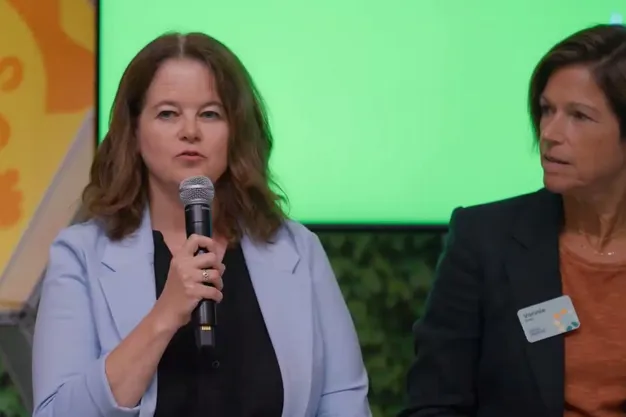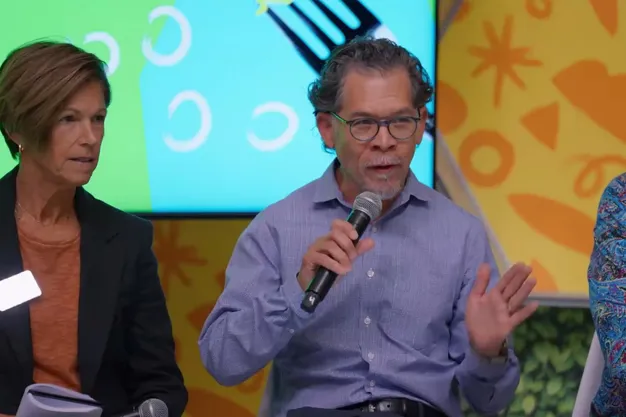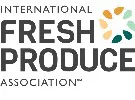What are some innovative solutions to increase the consumption of produce? This was the subject of this week's Virtual Town Hall from the IFPA, a session moderated by Jason Wilson of Partnership for a Healthier America. "For one in six Americans, good food is either too far away, too expensive, or both. Combine that with the fact that nine out of ten Americans don't eat the daily recommended amount of fruits and vegetables," says Wilson. "Combine those two factors, and there's room for innovation."
 Jason Wilson
Jason Wilson
What are the roadblocks to increasing consumption?
As Vonnie Estes of the International Fresh Produce Association notes, there are multiple barriers from affordability to access to food. "There's also a large knowledge base that's missing, so part of that is education," says Estes.
Dorn Wenninger of UNFI boils it down even more. "People will consume more if you make it more affordable. One of consumers' biggest criticisms is that produce doesn't last," he says. So for consumers on a budget of $15, for instance, a surprise spoiled clamshell of blackberries doesn't just make the buyer of that clamshell angry--they've also lost a significant part of their budget.
At the same time, he also notes that the eating experience isn't as good today. However, popular-selling products are innovative in addressing that. "They're making it a better quality experience--you can see what's happening in the tomato industry and snacking tomatoes," he says.
 Left to right: Megan Thomas, Vonnie Estes
Left to right: Megan Thomas, Vonnie Estes
Othor Cain from the Dole Sunshine for All Cities program knows that growing consumption comes from increasing access. Dole is currently operating a pilot program placing Good Stuff refrigerated food kiosks in seven Boys and Girls Clubs. "Here's what we know--if you give children the opportunity to grow it and touch it, they'll own it and take it to their families," says Cain.
Innovation challenges
"It is very difficult to innovate in produce. So much of the industry out of necessity has had to focus on yield and shipability to the detriment of consumer-facing attributes," says Megan Thomas of Pairwise. That accelerates challenges such as the perishability of produce.
Consumers also don't see innovation in stores. "In many cases, you're seeing the same products your parents saw a generation ago with some exceptions," she says, comparing it to coffee, for instance, and the numerous options consumers have today for coffee and coffee drinks versus just a few decades ago. "In produce, you're not seeing that level of innovation, and I think consumers are bored." That may be where techniques such as CRISPR, Pairwise's genome editing tool, could help accelerate innovation.
Related to that, Dorn notes lower price points and improving quality help boost consumption. He notes that in July alone, the U.S. consumed 120 million lbs. of strawberries at a price point of $3.42. Last December, the price point was, on average, $5.39, and Americans consumed only 62 million lbs. of strawberries. "When we can decrease the price, we can drive consumption. How do we give days of freshness to the consumer so that it lasts longer in our homes and improves the quality of the experience? When we do that, consumption increases, and our customers sell more," he says.
 L-R: Dorn Wenninger, Othor Cain
L-R: Dorn Wenninger, Othor Cain
For Cain, consumption growth comes in the workforce-developing space. "We're giving these young kids at the clubs an opportunity to run kiosk programs. We're taking them to the grocery stores when they're learning to do math inside. That's probably the most innovative space we're in," he says.
Technology and the possibilities
Technology developments are also around convenience, something Thomas says Americans are increasingly motivated by. Pairwise works in berries and cherries and says if, for example, technology such as CRISPR could remove the pits from cherries, that makes snacks that are more snackable. "So instead of donut holes, I could consume pitless cherries in the car," she says.
"How can we use innovation to grow better produce that lasts longer with less food waste that gets to the grocery store and looks and tastes good in a sustainable way?" asks Estes. "We work a lot on sustainability, and we have a grant from the USDA that we're working on climate-smart agriculture." That allows it to work with growers to help bring that technology to the farm and produce better produce.
The role of AI
Looking ahead, she also notes the growing conversation about artificial intelligence in agriculture. "We can think about it as giving us superpowers. It's allowing us to work much better and be more empowered with these systems that give us information and allow us to make decisions," Estes says.
 L-R: Vonnie Estes, Dorn Wenninger
L-R: Vonnie Estes, Dorn Wenninger
There are also consumption developments that aren't as technologically connected. "I'm excited about produce prescriptions," says Dorn. "The federal government has done their thing, and now it's up to individual states. We will see different states as innovators who produce prescriptions, and that really starts to address produce as medicine. It creates access."
He also tracks back to industry developments creating better eating experiences. He notes that in the last 52 weeks, the U.S. packaged salad industry sold 1.5 percent fewer units than the year before. "Within that, there's CEA, which is the most innovative area, representing two percent of sales of packing salads over the last 52 weeks. They grew 58 percent in units in the same period," he says, adding that growth is coming from giving a better eating experience. "As we focus on the consumer, that's where we'll really drive an increase in consumption, and that's going to accelerate in the next few years."
 For more information:
For more information:
Ashley Sempowski
International Fresh Produce Association
ASempowski@freshproduce.com
https://www.freshproduce.com/
